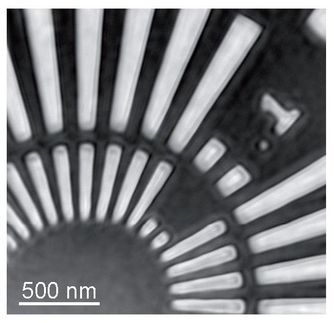Physicists catch a magnetic wave that offers promise for more energy-efficient computing
A team of physicists has taken pictures of a theorized but previously undetected magnetic wave, the discovery of which offers the potential to be an energy-efficient means to transfer data in consumer electronics.
The research was conducted by scientists at New York University, Stanford University, and the SLAC National Accelerator Laboratory.
"This is an exciting discovery because it shows that small magnetic waves - known as spin-waves - can add up to a large one in a magnet, a wave that can maintain its shape as it moves," explains Andrew Kent, a professor of physics at NYU. "A specialized x-ray method that can focus on particular magnetic elements with very high spatial resolution enabled this discovery and should enable many more insights into this behavior."
"Magnetism has been used for navigation for thousands of years and more recently to build generators, motors, and data storage devices," adds co-author Hendrik Ohldag, a scientist at the Stanford Synchrotron Radiation Laboratory, where the soliton was discovered. "However, magnetic elements were mostly viewed as static and uniform. To push the limits of energy efficiency in the future we need to understand better how magnetic devices behave on fast timescales at the nanoscale, which is why we are using this dedicated ultrafast x-ray microscope."
These magnetic waves are known as solitons and were theorized to occur in magnets in the 1970s. They form because of a delicate balance of magnetic forces - much like water waves can form a tsunami. However, these magnetic waves are not destructive; they could potentially be harnessed to transmit data in magnetic circuits in a way that is far more energy efficient than current methods that involve moving electrical charge.
This is because solitons are stable objects that overcome resistance, or friction, as they move. By contrast, electrons, used to move data today, do generate heat as they travel, due to resistance and thus requiring additional energy, such as from a battery, as they transport data to its destination.
In their search, the scientists deployed x-ray microscopy at the Stanford Synchrotron Radiation Lightsource in order to image the behavior of specific magnetic atoms in materials. The technique offers extraordinarily high spatial resolution and temporal resolution. The scientists created a condition in magnetic materials where the sought-after solitons should exist by injecting an electrical current into a magnetic material to excite spin-waves.
Original publication
D. Backes, F. Macià, S. Bonetti, R. Kukreja, H. Ohldag, and A. D. Kent; "Direct observation of a localized magnetic soliton in a spin-transfer nanocontact"; Phys. Rev. Lett.; 2015
Most read news
Original publication
D. Backes, F. Macià, S. Bonetti, R. Kukreja, H. Ohldag, and A. D. Kent; "Direct observation of a localized magnetic soliton in a spin-transfer nanocontact"; Phys. Rev. Lett.; 2015
Organizations
Other news from the department science

Get the chemical industry in your inbox
By submitting this form you agree that LUMITOS AG will send you the newsletter(s) selected above by email. Your data will not be passed on to third parties. Your data will be stored and processed in accordance with our data protection regulations. LUMITOS may contact you by email for the purpose of advertising or market and opinion surveys. You can revoke your consent at any time without giving reasons to LUMITOS AG, Ernst-Augustin-Str. 2, 12489 Berlin, Germany or by e-mail at revoke@lumitos.com with effect for the future. In addition, each email contains a link to unsubscribe from the corresponding newsletter.


























































